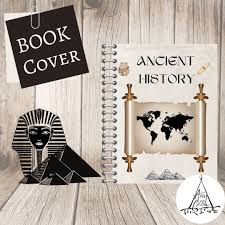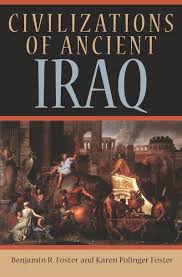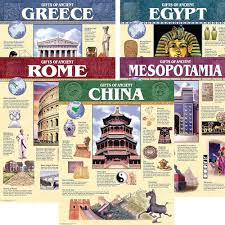Introduction
ancient civilizations and contributions to modern education as we know it today has been shaped by countless civilizations over millennia. The methods, institutions, and philosophies that form the backbone of our current educational systems owe much to the intellectual and cultural achievements of ancient societies. From the structured academies of ancient Greece to the intricate systems of learning in ancient China, these early civilizations laid the groundwork for the pursuit of knowledge that continues to thrive in the modern era. In this article, we will explore how ancient civilizations paved the way for modern education, uncovering the fascinating ways they contributed to the foundation of learning.
Ancient Egypt: The Birthplace of Formal Education

The Role of Scribes
In ancient Egypt, scribes held a prestigious position in society due to their mastery of writing and record-keeping. Education was primarily reserved for the elite, with young boys undergoing rigorous training to become proficient in hieroglyphics and other scripts. Scribes were essential in maintaining administrative records, religious texts, and literature, making them integral to the functioning of Egyptian society.
The Temple Schools
Egyptian education was closely linked to religious institutions. Temple schools were established to educate future priests and scribes. These schools provided instruction in various subjects, including mathematics, astronomy, medicine, and theology. The emphasis on formal education within religious settings highlights the importance of knowledge in maintaining societal and spiritual order.
Ancient Greece: The Cradle of Western Education
The Philosophy of Education
Ancient Greece is often credited with laying the foundation for Western education. Philosophers such as Socrates, Plato, and Aristotle developed theories of education that emphasized critical thinking, ethics, and the pursuit of wisdom. Plato’s Academy and Aristotle’s Lyceum were early examples of institutions dedicated to higher learning and intellectual discourse.
The Role of Gymnasia
In addition to philosophical education, the Greeks also valued physical education. Gymnasia were public institutions where young men received training in athletics, music, and academics. The holistic approach to education in ancient Greece underscored the importance of developing both mind and body.
Ancient China: The Confucian Model
Confucian Principles
Confucianism played a significant role in shaping the educational system of ancient China. Confucius advocated for a merit-based society where individuals could achieve positions of authority through education and personal virtue. This philosophy emphasized moral development, filial piety, and the importance of studying classical texts.
The Imperial Examination System
One of the most enduring legacies of ancient Chinese education is the imperial examination system. Established during the Han Dynasty, this rigorous testing process was designed to select government officials based on their knowledge and abilities. The examinations covered a wide range of subjects, including literature, history, and philosophy. The imperial examination system influenced educational practices in China for centuries and inspired similar systems in other parts of the world.
Ancient India: The Gurukul System
The Role of Gurus
In ancient India, the gurukul system was the primary mode of education. Students, or disciples, lived with their guru (teacher) in an ashram (hermitage) where they received personalized instruction. The guru-disciple relationship was central to the learning process, emphasizing respect, discipline, and holistic development.
Subjects of Study
The curriculum in ancient Indian education was diverse, encompassing subjects such as grammar, mathematics, logic, philosophy, medicine, and the arts. The emphasis on a well-rounded education reflected the belief that knowledge was interconnected and that students should develop a broad range of skills and understanding.
Also Read The Psychology of Superstitions: Unraveling the Quirks of Our Minds
Mesopotamia: The First Schools
The Edubba System
Mesopotamia, often referred to as the cradle of civilization, was home to some of the earliest known schools. These institutions, known as edubbas or “tablet houses,” were dedicated to the training of scribes. Students learned to read and write cuneiform script, the earliest form of writing, as well as subjects like mathematics and law.
The Role of Education in Society
Education in Mesopotamia was essential for maintaining the administrative and economic functions of society. Scribes played a crucial role in record-keeping, trade, and governance. The establishment of formal schools indicates the value placed on education and the development of specialized skills.
The Islamic Golden Age: A Flourishing of Knowledge

The House of Wisdom
During the Islamic Golden Age, the House of Wisdom in Baghdad became a renowned center of learning and scholarship. Scholars from diverse backgrounds came together to study and translate texts from various cultures, including Greek, Persian, and Indian works. This intellectual exchange led to significant advancements in science, mathematics, medicine, and philosophy.
The Madrasa System
Madrasas, or Islamic schools, were established across the Islamic world to provide education in religious and secular subjects. These institutions offered courses in theology, law, medicine, and the natural sciences. The emphasis on knowledge and learning in the Islamic Golden Age left a lasting impact on education in both the Islamic world and beyond.
The Mayan Civilization: Astronomy and Mathematics
The Importance of Calendrical Systems
The ancient Mayans are renowned for their advanced knowledge of astronomy and mathematics. They developed highly accurate calendrical systems based on their observations of celestial bodies. Mayan priests, who were also scholars, used this knowledge to predict astronomical events and guide agricultural practices.
The Role of Education
Education in Mayan society was primarily the domain of the elite, particularly the priesthood. Young boys from noble families were trained in various subjects, including astronomy, mathematics, and hieroglyphic writing. The emphasis on education among the elite ensured the preservation and transmission of Mayan knowledge.
The Incan Civilization: Engineering and Agriculture
The Qhapaq Ñan
The Incas are celebrated for their impressive engineering feats, including the construction of the Qhapaq Ñan, an extensive network of roads that connected their vast empire. Education in Incan society focused on practical skills, particularly in engineering and agriculture. Young boys were trained in building techniques, irrigation methods, and agricultural practices.
Also Read Top 5 Tech Gadgets You Didn’t Know You Needed in 2024
The Role of Quipus
The Incas used a unique system of record-keeping known as quipus, which consisted of knotted strings used to convey information. Learning to read and create quipus was an essential skill for administrators and record-keepers in the Incan Empire. This innovative approach to communication highlights the ingenuity of Incan education.
Ancient Persia: The Academy of Gondishapur
A Hub of Learning
The Academy of Gondishapur, established during the Sassanian Empire in ancient Persia, was a renowned center of learning that attracted scholars from various parts of the world. The academy offered courses in medicine, astronomy, philosophy, and other disciplines, fostering a rich intellectual environment.
The Integration of Knowledge
Gondishapur was notable for its integration of knowledge from different cultures, including Greek, Indian, and Persian traditions. This cross-cultural exchange enriched the educational offerings and contributed to advancements in various fields of study.
The Influence of Ancient Libraries
The Library of Alexandria
The Library of Alexandria, founded in the 3rd century BCE in Egypt, was one of the most famous libraries of the ancient world. It housed a vast collection of texts from different cultures and served as a center for scholarly research and learning.
The Preservation of Knowledge
Ancient libraries played a crucial role in preserving and transmitting knowledge across generations. The efforts of scholars and librarians to collect, translate, and copy texts ensured that valuable information was not lost to time.
The Legacy of Classical Education
The Trivium and Quadrivium
The educational model of the Trivium (grammar, rhetoric, and logic) and the Quadrivium (arithmetic, geometry, music, and astronomy) originated in classical antiquity and shaped medieval education. This model emphasized a comprehensive approach to learning that integrated the arts and sciences.
The Birth of Universities
The establishment of medieval universities in Europe was heavily influenced by classical education. Institutions such as the University of Bologna and the University of Paris drew inspiration from ancient models of higher learning and became centers of intellectual pursuit.
The Renaissance: A Rebirth of Learning
The Humanist Movement
The Renaissance marked a period of renewed interest in classical knowledge and the humanities. Humanist scholars sought to revive the study of ancient texts and emphasized the value of education in shaping well-rounded individuals.
The Spread of Printing
The invention of the printing press by Johannes Gutenberg in the 15th century revolutionized education by making books more accessible. The widespread availability of printed texts facilitated the dissemination of knowledge and contributed to the growth of literacy.
Modern Education: Continuity and Change
The Influence of Ancient Philosophies
The philosophies and educational practices of ancient civilizations continue to influence modern education. Concepts such as critical thinking, holistic development, and merit-based advancement have their roots in ancient traditions and remain relevant today.
Adapting to New Challenges
While the foundation of modern education is built on ancient principles, contemporary educational systems must also adapt to new challenges. The rise of technology, globalization, and changing societal needs require innovative approaches to teaching and learning.
Conclusion
The journey of education from ancient civilizations to the modern era is a testament to humanity’s enduring quest for knowledge. The contributions of ancient societies have shaped the way we learn, think, and understand the world around us. By unearthing the roots of knowledge, we gain a deeper appreciation for the rich tapestry of educational practices that have paved the way for the advancements and innovations of today. As we continue to build on this legacy, we are reminded of the timeless value of education in fostering a more informed and enlightened society.
FAQs
1. How did ancient Egypt contribute to modern education?
Ancient Egypt established formal schools, particularly in temples, where scribes and priests were trained in various subjects, including mathematics, astronomy, and medicine. Their emphasis on record-keeping and religious education laid the groundwork for formal education.
2. What role did What role did ancient Greece play in modern education?
Ancient Greece significantly contributed to modern education through its emphasis on philosophy, critical thinking, and holistic development. The establishment of academies like Plato’s Academy and Aristotle’s Lyceum laid the foundation for Western education.
3. How did the Confucian model influence education in ancient China?
The Confucian model emphasized meritocracy, moral development, and the study of classical texts. The imperial examination system, based on Confucian principles, selected government officials through rigorous testing, influencing educational practices for centuries.
4. What was the gurukul system in ancient India?
The gurukul system in ancient India involved students living with their guru in an ashram, where they received personalized instruction in various subjects. This system emphasized respect, discipline, and holistic development.
5. How did the Islamic Golden Age contribute to education?
During the Islamic Golden Age, institutions like the House of Wisdom in Baghdad became centers of learning and scholarship. Madrasas offered education in both religious and secular subjects, leading to significant advancements in science, medicine, and philosophy.


